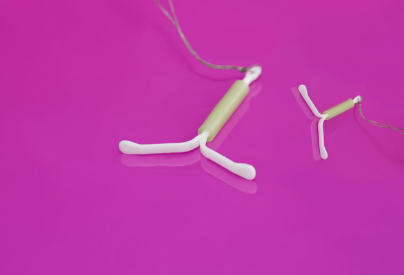Intrauterine Device
Home » Institute of Obstetrics & GynAecology & IVF » Intrauterine Device
Intrauterine Device
A birth control device is an intrauterine device (IUD). It either damages or kills a male sperm or prevents it from accessing a woman’s uterus to prevent conception. An IUD is a little T-shaped device with a string on the end. The string’s role is to ensure that the IUD stays in place. It’s also how a doctor gets rid of the device.
There are two types o IUDs Especially in abroad countries:
Hormonal and Non- Hormonal. The non-Hormonal option is paragard.Copper rings, or coils, in the device change the molecules in your uterine fluid, killing sperm. If you are allergic to copper, you should avoid using ParaGard. Mirena, Kyleena, Liletta, and Skyla are some of the hormonal choices available.

Health Improvement:
An IUD can be inserted by your primary care physician or a woman’s doctor. ParaGard can be inserted at any point throughout your menstrual cycle. Hormonal IUDs should be placed within the first seven days of your period. The process takes only a few minutes and takes place in the doctor’s office. The doctor inserts the IUD into your vaginal canal through a little plastic tube. During this procedure, you may experience discomfort or cramps. Distress might continue for several hours or even days. Most doctors recommend having someone else drive you home after your appointment.
IUD works immediately. You can have sex, exercise, and use tampons. Depending on the kind, an IUD can last anywhere from 3 to 12 years. It can be removed at any moment by your doctor.
If you have any of the symptoms or issues listed below, contact DR.Gopinath immediately. They’ll examine your IUD and decide whether to remove or replace it.
IUD works immediately. You can have sex, exercise, and use tampons. Depending on the kind, an IUD can last anywhere from 3 to 12 years. It can be removed at any moment by your doctor.
If you have any of the symptoms or issues listed below, contact DR.Gopinath immediately. They’ll examine your IUD and decide whether to remove or replace it.
- It’s not easy to find the string
- Can feel the IUD
- The IUD loosens or falls out.
- You have a temperature or are experiencing chills.
- Your vaginal discharge contains unusual blood, fluid, or odour.
Things to Consider:
If you have abnormal vaginal bleeding, you should not use an IUD. IUD use is also prohibited by cancer of the cervix or uterus, as well as AIDS infection. If you are pregnant or want to become pregnant, you should not use an IUD. However, you can get an IUD right after giving birth. The best time for the doctor to insert it is after the baby and placenta have been delivered.
Sexually transmitted diseases and infections are not protected by IUDs (STDs or STIs). When having sex, use a condom to reduce your chances of contracting an STD. Your menstrual cycle may be affected by IUDs. You may experience pain, cramping, or spotting (light bleeding) between periods at first. This can last anywhere from three to six months. Your periods may become irregular if you use a hormonal IUD. You may also miss periods as a result of them. Copper IUDs can make your period more painful and cause more bleeding.
Sexually transmitted diseases and infections are not protected by IUDs (STDs or STIs). When having sex, use a condom to reduce your chances of contracting an STD. Your menstrual cycle may be affected by IUDs. You may experience pain, cramping, or spotting (light bleeding) between periods at first. This can last anywhere from three to six months. Your periods may become irregular if you use a hormonal IUD. You may also miss periods as a result of them. Copper IUDs can make your period more painful and cause more bleeding.
The following are some of the advantages of IUDs:
- If used properly prevention success rate is 99%
- Depend on the usage life time between 3- 12 years
- Can remove anytime by consulting doctor
- It’s very convenient
- It's safe for women who have recently given birth or are breastfeeding.
- There is a low risk of negative side effects.
Risk Factors:
- When the IUD is inserted, it causes injury to the uterus.
- If you have an STD, you're more likely to develop pelvic inflammatory disease.
- If you have a chance of becoming pregnant, your doctor should remove the IUD. When you become pregnant, your chances of having a miscarriage and having health problems for both you and your baby increase.
- Ectopic pregnancy is a possibility. When an egg fertilises outside of your uterus, this happens. It's uncommon, but it can be harmful to a woman.

